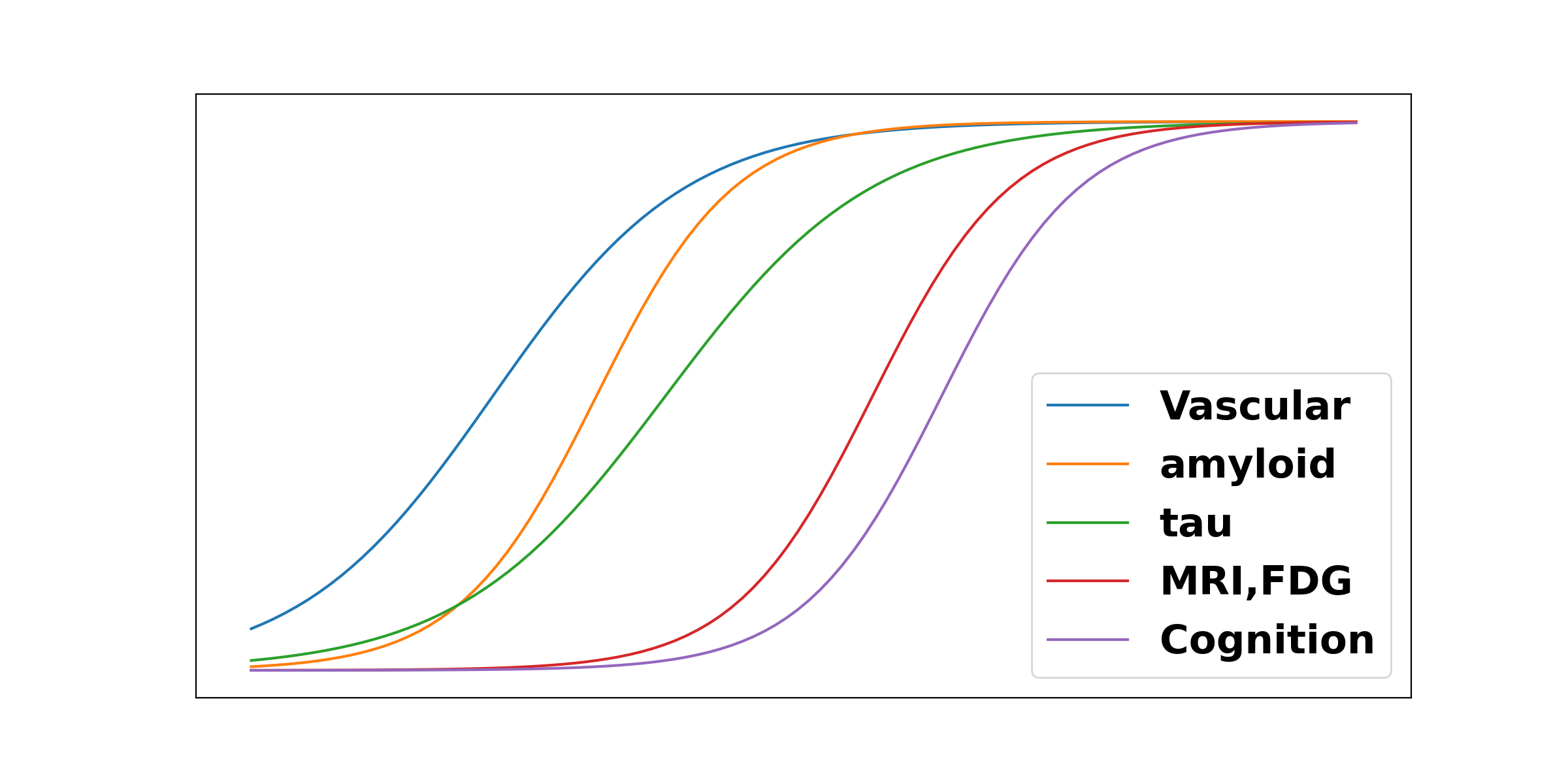Disease Progression Modelling#
The Disease Progression Modelling community unites medics with researchers and engineers across the physical and life sciences to tackle some of the biggest challenges of 21st-century medicine by harnessing the power of mathematics, computer science, and data.
This website aims to serve as a portal for Disease Progression Modelling.

Fig. 1 Pursuing the aim of hypothetical cascades of dynamic biomarkers, Disease Progression Modelling unites medical knowledge & data-driven models with the ultimate objective to improve clinical care & research by precisely characterizing the progression of diseases at both the average and individual level.#
Disease Progression Modelling in a nutshell#
Oxtoby and Alexander, “Imaging plus X…”, Curr Opin Neurol 2017.
Young/Oxtoby, et al., and Alexander, “…thinking outside the black box”, Nat Rev Neurosci 2024.
Disease Progression Modelling (DPM), as we perceive it, has been around since approximately 2011. Computer science researchers took up the challenge of producing quantitative and actionable signatures of disease, inspired by the emerging hypothetical models of Alzheimer’s disease progression at that time (Jack et al, 2010; Aisen et al., 2010; Frisoni et al., 2010) that look like the hypothetical cascade of dynamic biomarkers represented in the image below.
The snowstorm of data available to clinicians defies qualitative evaluation; the heterogeneity of data types complicates integration through traditional statistical methods; and the large datasets becoming available remain far from the big-data sizes necessary for fully data-driven machine-learning approaches. Data-driven DPM strikes a balance between imposed knowledge of disease features and patterns learned from data.
Nowadays there are a suite of DPMs available (see this book chapter), with a variety of features and requirements, that are capable of answering a vast array of clinical and research questions — often limited only by the data you have available. For a detailed review of key concepts in the development (and progression) of DPM, see (Oxtoby and Alexander, “Imaging plus X…”, Curr Opin Neurol 2017) and (Young/Oxtoby, et al., and Alexander, “…thinking outside the black box”, Nat Rev Neurosci 2024).
DPM has been empowered by the increasing availability of large medical datasets, particularly in neurodegenerative diseases like Alzheimer’s, and the field is indebted to the volunteers who willingly provide their data for research.
Site content#
The site offer multiple ways to have a glance at the Disease Progression Modelling community and discover the models it has been developing, both from a theoretical and practical point of view
Models
Recent mathematical development have enable to unveil some aspect of disease progression modelling. We here propose to give an overview of these methods and further links and references for discover them.
Tutorials
To better grasp the intention of each model, we propose few tutorials in the form of Python notebooks that are dedicated to dive in each model
Conferences
The DPM community is eager to communicate about the most recent developments. For this reason, multiple conferences / workshops / symposia have been organized.
Do not hesitate to reach out if you want to be part of the community.
